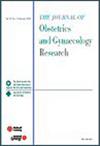Effect of erector spinae plane block and transversus abdominis plane block on quality of recovery and postoperative pain after laparoscopic hysterectomy; randomized, double-blinded clinical trial
Abstract
Background
The erector spinae plane (ESP) block is used in various surgical procedures as an effective and safe regional analgesia technique. Unlike other plane blocks, the ESP block provides cutaneous and visceral analgesia by involving both ventral and dorsal roots. This study compared the ESP block and the transversus abdominis plane (TAP) block after laparoscopic hysterectomy, aiming primarily to compare quality of recovery (QoR) and secondarily to compare pain scores.
Methods
A prospective randomized controlled study involved 64 patients. After ethical approval and patient consent, patients undergoing elective laparoscopic hysterectomy were randomly assigned to two groups: Group E received a bilateral ESP block, and Group T received a bilateral lateral TAP block. In the recovery room, patients with a numerical rating score (NRS) of 4 or above received intravenous meperidine as rescue analgesia. The same postoperative analgesia plan was applied to all patients, including intravenous paracetamol and intramuscular diclofenac sodium. Tramadol was administered if the NRS score was 4 or above. Preoperative and postoperative QoR scores, pain scores, rescue analgesia use, nausea and vomiting, antiemetic use, unexpected side effects, mobilization time, and discharge time were recorded.
Results
When comparing preoperative and postoperative QoR scores, it was found that the decreases in scores were less in Group E. NRS scores were lower at the 4th, 8th, 12th, and 16th hours in Group E. Mobilization times were also shorter in Group E.
Conclusions
The ESP block is more effective than the TAP block in improving the quality of recovery and pain scores after laparoscopic hysterectomy.

 求助内容:
求助内容: 应助结果提醒方式:
应助结果提醒方式:


